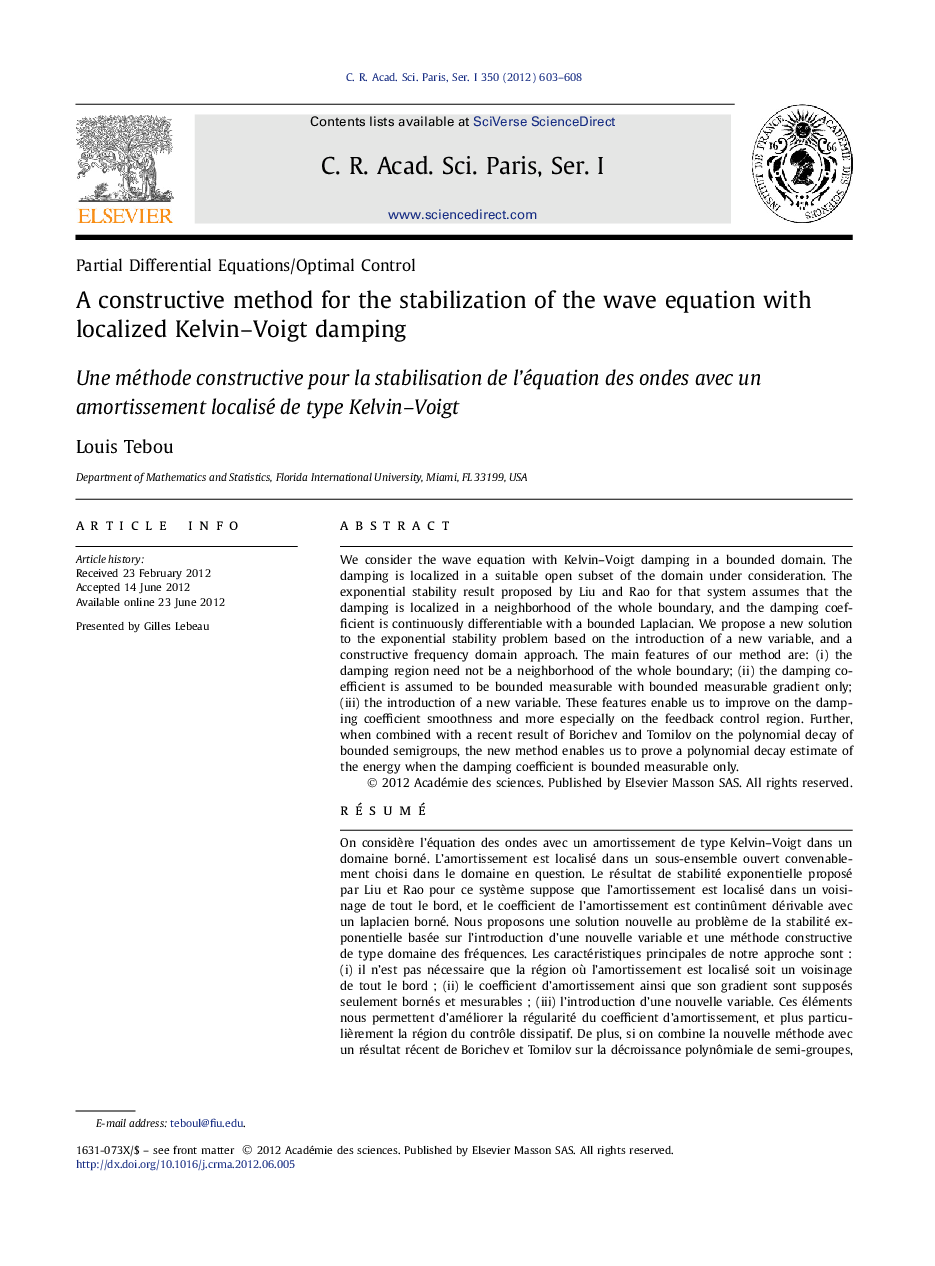| Article ID | Journal | Published Year | Pages | File Type |
|---|---|---|---|---|
| 4670429 | Comptes Rendus Mathematique | 2012 | 6 Pages |
We consider the wave equation with Kelvin–Voigt damping in a bounded domain. The damping is localized in a suitable open subset of the domain under consideration. The exponential stability result proposed by Liu and Rao for that system assumes that the damping is localized in a neighborhood of the whole boundary, and the damping coefficient is continuously differentiable with a bounded Laplacian. We propose a new solution to the exponential stability problem based on the introduction of a new variable, and a constructive frequency domain approach. The main features of our method are: (i) the damping region need not be a neighborhood of the whole boundary; (ii) the damping coefficient is assumed to be bounded measurable with bounded measurable gradient only; (iii) the introduction of a new variable. These features enable us to improve on the damping coefficient smoothness and more especially on the feedback control region. Further, when combined with a recent result of Borichev and Tomilov on the polynomial decay of bounded semigroups, the new method enables us to prove a polynomial decay estimate of the energy when the damping coefficient is bounded measurable only.
RésuméOn considère lʼéquation des ondes avec un amortissement de type Kelvin–Voigt dans un domaine borné. Lʼamortissement est localisé dans un sous-ensemble ouvert convenablement choisi dans le domaine en question. Le résultat de stabilité exponentielle proposé par Liu et Rao pour ce système suppose que lʼamortissement est localisé dans un voisinage de tout le bord, et le coefficient de lʼamortissement est continûment dérivable avec un laplacien borné. Nous proposons une solution nouvelle au problème de la stabilité exponentielle basée sur lʼintroduction dʼune nouvelle variable et une méthode constructive de type domaine des fréquences. Les caractéristiques principales de notre approche sont : (i) il nʼest pas nécessaire que la région où lʼamortissement est localisé soit un voisinage de tout le bord ; (ii) le coefficient dʼamortissement ainsi que son gradient sont supposés seulement bornés et mesurables ; (iii) lʼintroduction dʼune nouvelle variable. Ces éléments nous permettent dʼaméliorer la régularité du coefficient dʼamortissement, et plus particulièrement la région du contrôle dissipatif. De plus, si on combine la nouvelle méthode avec un résultat récent de Borichev et Tomilov sur la décroissance polynômiale de semi-groupes, cela nous permet de démontrer une estimation de décroissance polynômiale de lʼénergie lorsque le coefficient dʼamortissement est seulement borné et mesurable.
